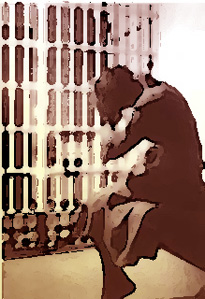Filip Expresses Concern About the Return of Sentencing Disparities
 Former U.S. Deputy Attorney General Mark R. Filip warned at Tuesday’s Hallows Lecture that disparities in sentencing by federal judges are returning since the U.S. Supreme Court ruled five years ago that sentencing guidelines are only advisory.
Former U.S. Deputy Attorney General Mark R. Filip warned at Tuesday’s Hallows Lecture that disparities in sentencing by federal judges are returning since the U.S. Supreme Court ruled five years ago that sentencing guidelines are only advisory.
Filip, who also is a former federal judge and now practices with a Chicago law firm, said that United States v. Booker in 2005 reduced the import of sentencing guidelines that dated to the late 1980s, “returning us to an era of indeterminate sentencing.” While he said that commentary on Booker from both judges and defense lawyers has been generally favorable, data on sentencing patterns since the decision show that in different parts of the country, significantly different sentences are being given for comparable convictions.
